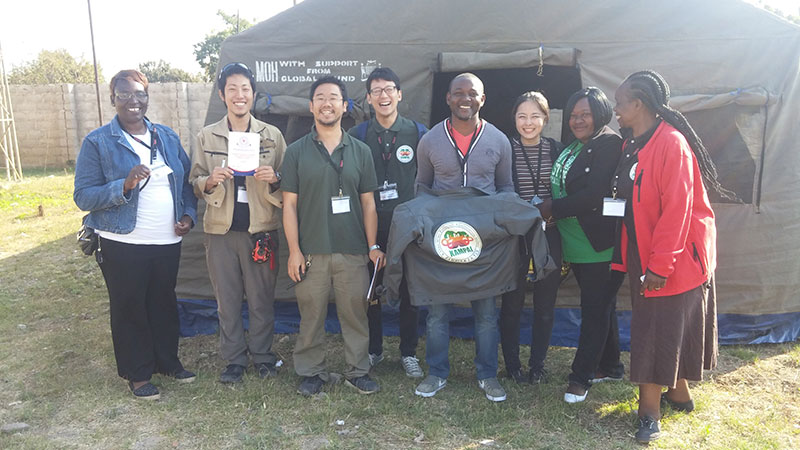News & Topics
Uncovering the extent of lead poisoning in the Kabwe mine area in Zambia
Investigating the impact of lead, cadmium, and zinc from mining sites on nearby residents’ hematopoiesis and liver and kidney functions (Reported by the SATREPS Project in Zambia)
Science and Technology Research Partnership for Sustainable Development(SATREPS)
Dr. Hokuto Nakata from Hokkaido University, a research member of the SATREPS project currently underway in Zambia called “Visualization of Impact of Chronic/Latent Chemical Hazard and Geo-Ecological Remediation” (Principal Investigator: Prof. Mayumi Ishizuka from Hokkaido University), measured the concentration of lead, cadmium, and zinc in the blood samples collected from 504 residents in the Kabwe mine area to investigate the respective effects of these metals on hematopoiesis and other functions of the liver and kidney in human bodies.
After measuring metal concentration in the blood samples, the following results became clear:
- There is a tendency that the residents living near the site of the mine have higher lead levels in their blood, and cadmium levels in the blood were also significantly higher in some of the areas.
- The indicators for liver and kidney functions are in the abnormal range for one out of five adults (for some indicators this is as high as one in two).
- Residents with particularly high lead levels in their blood exhibited reduced activity of delta aminolevulinic acid dehydratase(1) (clinical parameters of heme synthesis). In short, the study suggests that the residents may be suffering from anemia because lead inhibits heme synthesis, which is one of the hematopoietic processes.
- A negative correlation was found between cadmium concentration in the blood and estimated glomerular filtration rate(2) in residents over 5 years of age. In other words, cadmium in blood may lead to a deterioration in the function of the kidney to filter blood and expel waste products into the urine.
These results suggest that the residents suffer from health problems due to heavy metal pollution, and appropriate pollution control and health care treatments must be implemented immediately. To facilitate the implementation of treatment plans to alleviate lead poisoning, the results of this investigation will be shared with the Zambian government and international organizations.

Dr. Hokuto Nakata (second from the left) and other scientists at the research site in Kabwe, Zambia. (Photo: Hokuto Nakata)
(1)Delta-aminolevulinic acid dehydratase (ALAD)
An enzyme involved in heme synthesis. Lead exposure reduces enzyme activity in ALAD and inhibits heme synthesis, resulting in anemia.
(2)Estimated glomerular filtration rate (eGFR)
The volume of blood plasma that is filtered through glomerular capillaries in the kidney per unit time, estimated from age, gender, and the creatinine levels in the blood. An indicator of the ability of the kidneys to filter blood and excrete waste products into the urine.
【Press Information】
- Hokkaido University:
- https://www.global.hokudai.ac.jp/blog/lead-poisoning-could-reduce-gene-expression-in-humans/
- Visualization of Impact of Chronic/Latent Chemical Hazard and Geo-Ecological Remediation
- https://www.jst.go.jp/global/english/kadai/h2701_zambia.html
